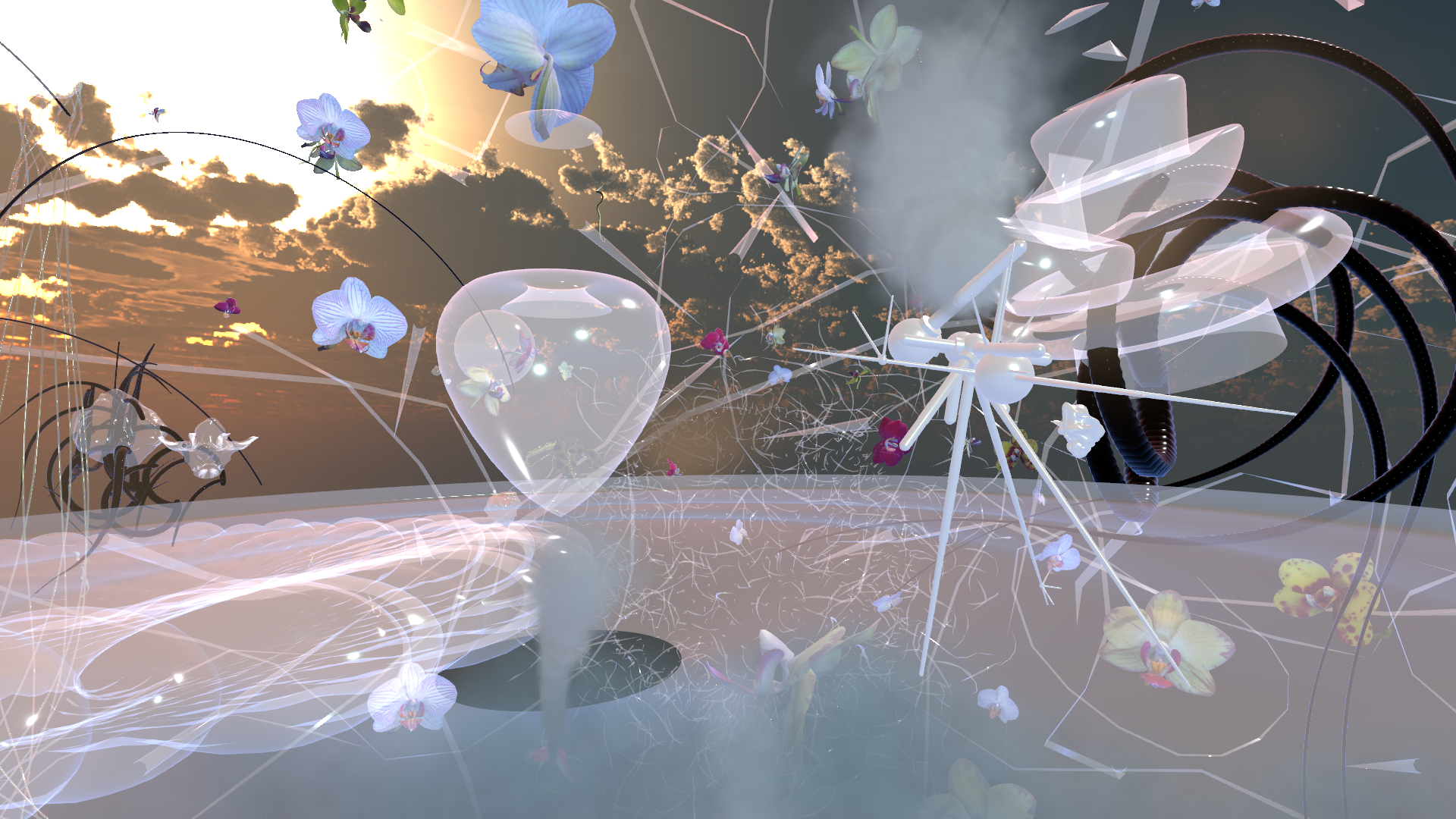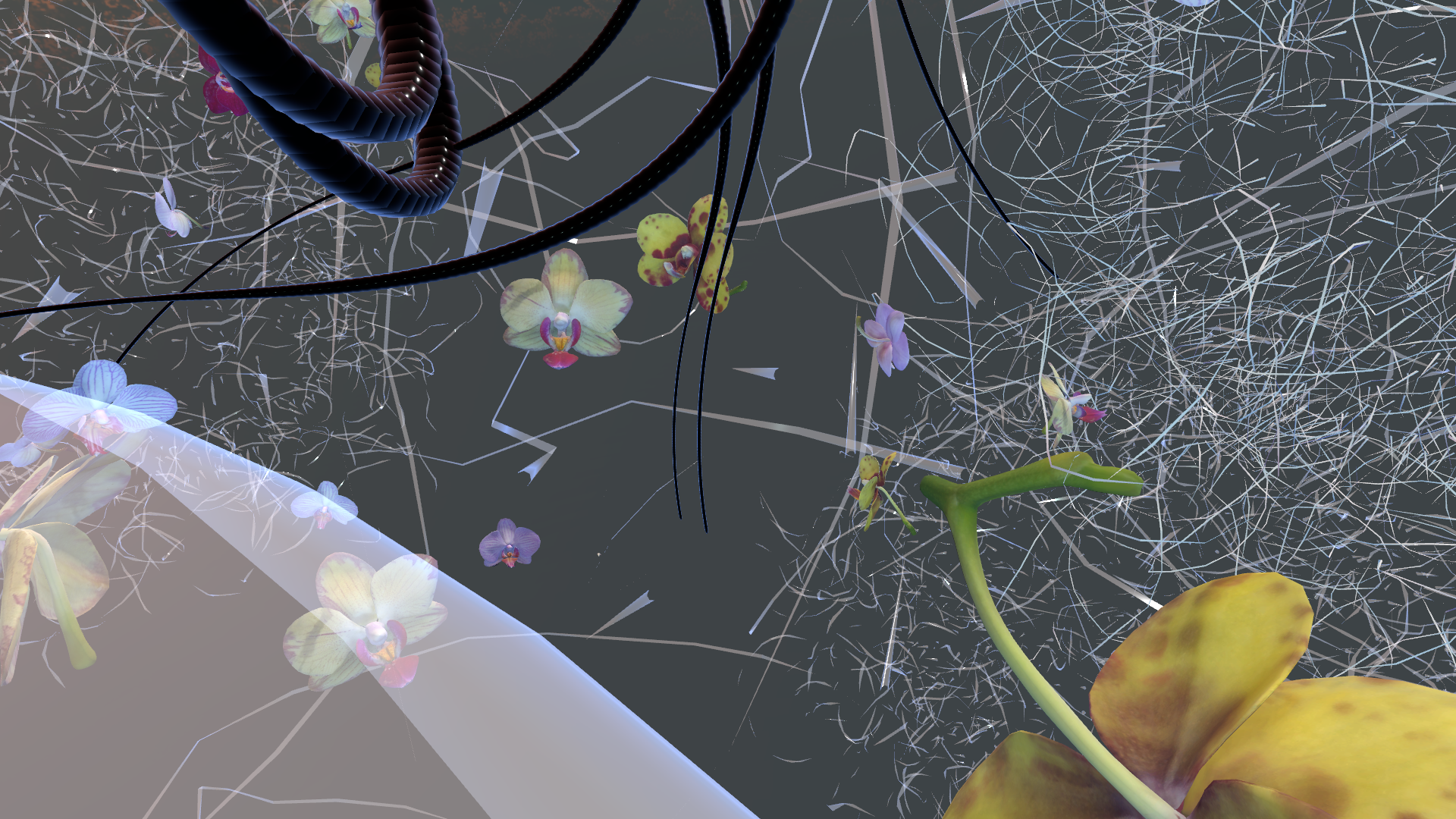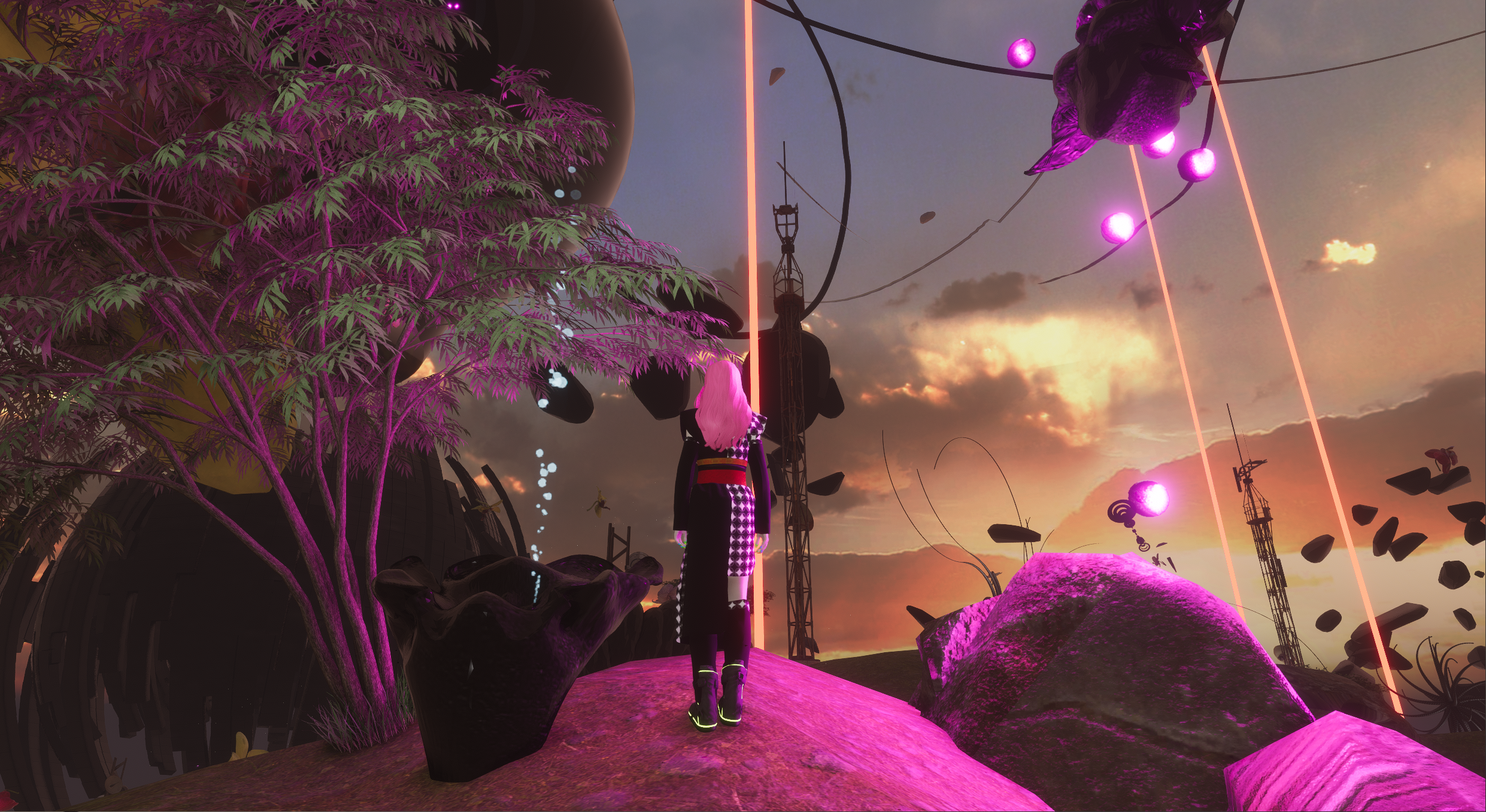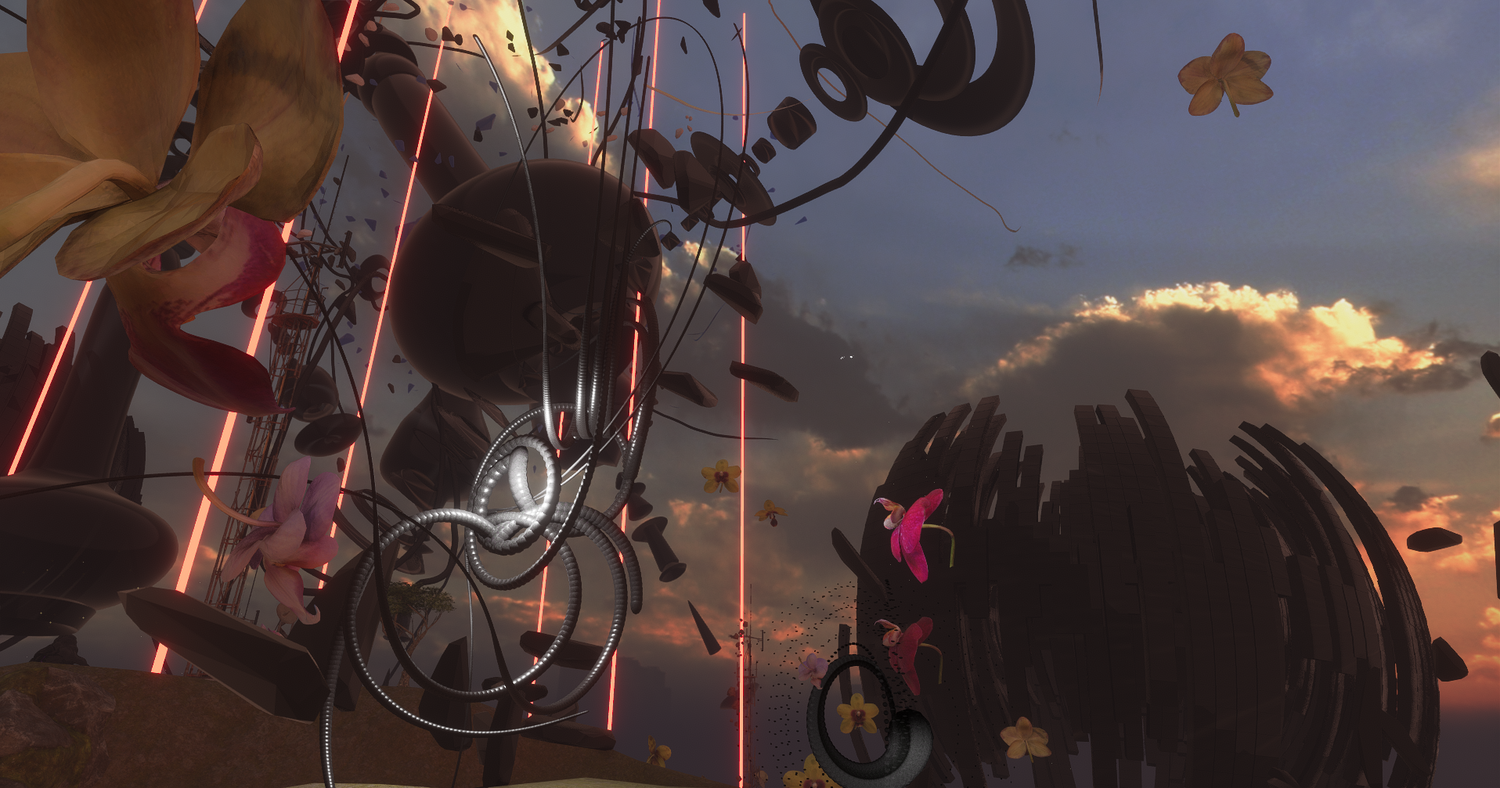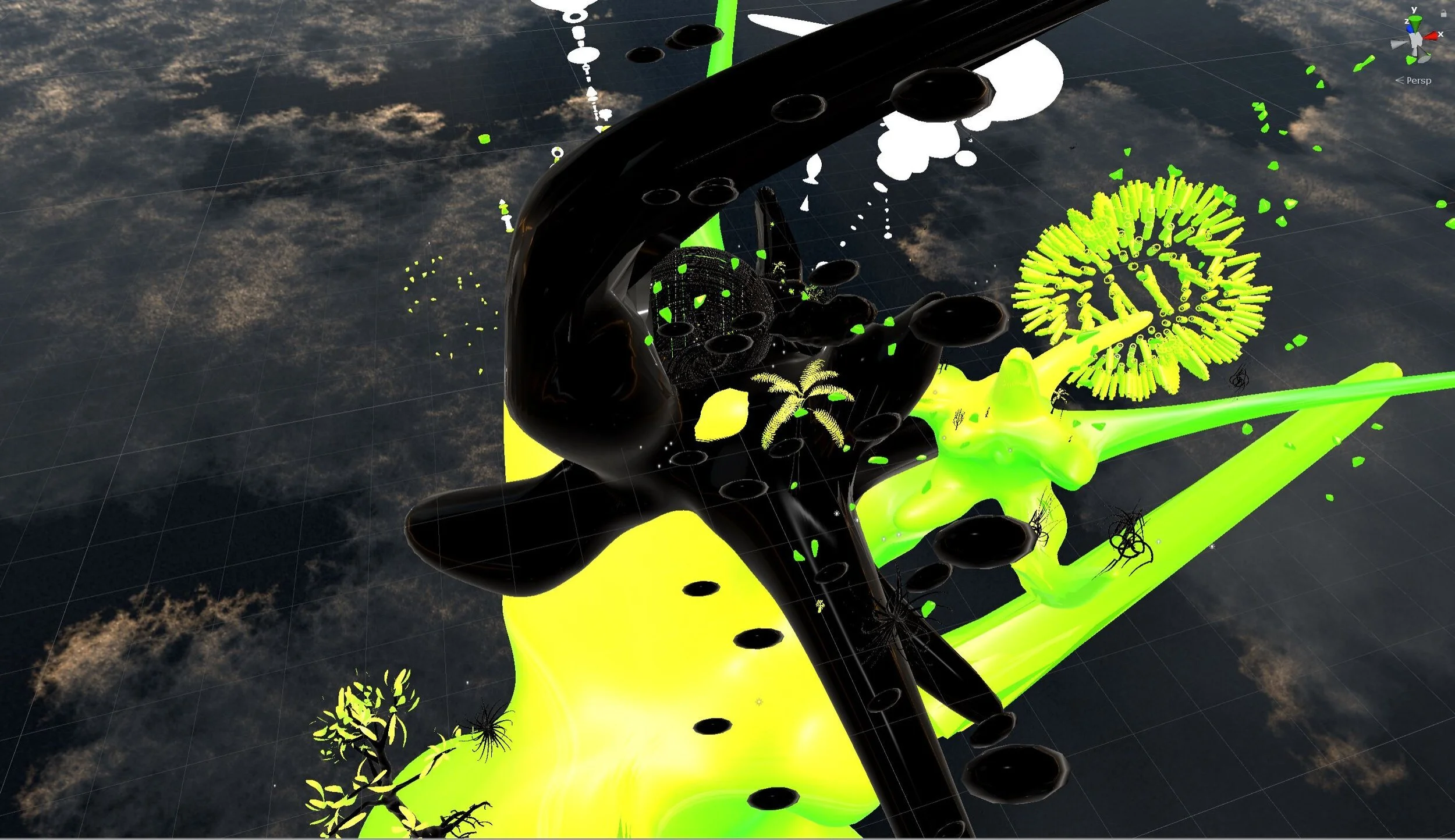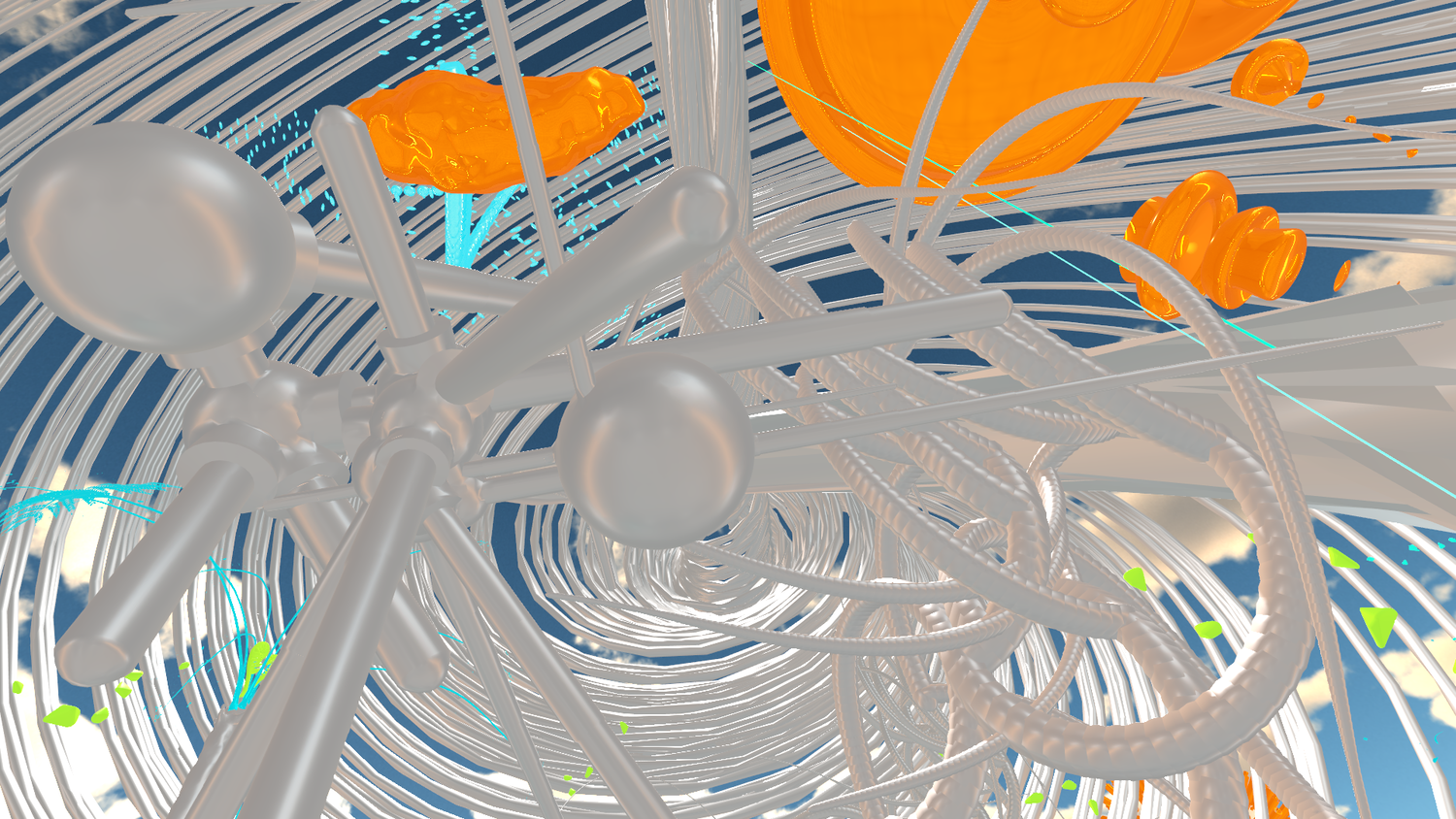Sphere4: Genesis
Sphere4: Genesis
Virtual reality art installation published on VRChat / video work, 2021.
3D graphics, world building, digital sculptures: Tanja Vujinovic
Sphere4 ₲Ɇ₦Ɇ₴ł₴ AV set used for training of deep neural network by Tanja Vujinović (visual material from Universal Objects and AvantGarden series) and Sasa Radic (sound);
Sound: Tanja Vujinovic and LUZ1E
Training of deep neural network: Dr Vid Podpečan, Department of Knowledge Technologies, Jožef Stefan Institute
Coproduction: SciArtLab, Jožef Stefan Institute
Production: Tanja Vujinovic / Ultramono, 2021.
Consulting
Dr Jelena Guga, researcher
Thimster, Graphics design master
Dr Vid Podpečan, Department of Knowledge Technologies, Jožef Stefan Institute
Ivan Stanić, curator and artist
Derek Snyder, researcher and editor
Friends from VRChat
Sphere4: Genesis expands the Eden universe through sound generated by a custom deep neural network trained on minimal techno. This machinic pulse infuses the garden with a living rhythm, animating orchids, serpents, and techno-organic machines that inhabit its landscapes. Dyson sphere–like architectures orbit distant stars, harvesting energy for this synthetic biosphere. In Genesis, AI and myth intermingle, creating a world where synthetic beings evolve through sonic resonance and emergent play.
Sphere4: Genesis, Virtual reality art installation, 2021.
Sphere4: Eden
Sphere4: Eden
Virtual reality art installation published on VRChat / video work, 2021.
3D graphics, world building, digital sculptures: Tanja Vujinović
Sound: Tanja Vujinović and LUZ1E
Coproduction: SciArtLab, Jožef Stefan Institute
Production: Tanja Vujinovic / Ultramono, 2021.
Consulting
Dr Jelena Guga, researcher
Thimster, Graphics design master
Ivan Stanić, curator and artist
Derek Snyder, researcher and editor
Friends from VRChat
Sphere4: Eden is a virtual garden of sentient flora, ambient intimacy, and emotional machines. It is a space of unity and interconnection, where organic, machinic, and symbolic entities interact in a continuous state of transformation. Inspired by posthuman ecologies, Eden is both a sanctuary and a threshold — a place where connection itself becomes ritual, and where vegetal, animal, and synthetic beings converge into new forms of life.
Sphere4: Eden, Virtual reality art installation, 2021.
CLUB 2.0
Club 2.0 (AvantGarden: Sphere4)
Virtual reality art installation published on Sansar / video work, 2011.
3D graphics, world building, digital sculptures, sound: Tanja Vujinović
Additional assets for the world and avatars: Sansar Store
Production: Tanja Vujinović / Ultramono, 2021.
Consulting
Arijana Filipić, Department of Biotechnology and Systems Biology, National Institute of Biology
Prof. George Poinar, College of Science at Oregon State University
Dr Vid Podpečan, Department of Knowledge Technologies, Jožef Stefan Institute
Ivan Stanić, curator and artist
Friends from Sansar
AvantGarden Club 2.0 is a virtual reality installation merging techno soundscapes, alien flora, and speculative machines into a surreal club for communion and play. Hosted on Sansar, this post-game platform becomes a liquid arena of identity, intimacy, and event-driven transformation. Digital orchids bloom, Dyson-inspired proto-machines orbit, and sonic waves ripple like invisible filaments through bodies—linking avatars in primal, collective motion. Channeling Guattari’s chaosmic becomings and Hakim Bey’s TAZ, this is a subversive ritual of connection, care, and ecstatic rebellion. In this synthetic garden, music is a medium of desire, and VR becomes a dream of liberated togetherness.
Club 2.0, Virtual reality art installation, 2021.
AvantGarden Sphere4 Club
AvantGarden Sphere4 Club
Virtual reality art installation published on VRChat / video work, collaborative events, 2020.
3D graphics, world building, digital sculptures, sound: Tanja Vujinović
3D objects of carboniferous plants: Dariusz Andrulonis for edukator.pl
Chenocebus allodapus and Strychnos electri plant 3D object modelling: Thimster, Graphics Design Master
Production: Tanja Vujinović / Ultramono, 2020.
Consulting
Kristina Bukač, Informatics engineer
Prof. George Poinar, College of Science at Oregon State University
Dr Jelena Guga, researcher
Thimster, Graphics Design Master
Dr Vid Podpečan, Department of Knowledge Technologies, Jožef Stefan Institute
Ivan Stanić, curator and artist
Derek Snyder, researcher and editor
Friends from VRChat
AvantGarden Sphere4 Club is a VRChat-based audiovisual installation — a soundscapes-infused sanctuary for social connection and virtual ecology. In this synthetic garden, ancient plant species like Strychnos electri and Chenocebus allodapus coexist with Dyson sphere-inspired structures, orchids, and serpentine machines evoking twisted symbols of healing and danger. Visitors float through a surreal landscape of reconstructed botanical pasts and futures, where immersive sound binds avatars in a communal dance. Influenced by Guattari’s chaosmic becomings, Flusser’s philosophy of play, and Bey’s Temporary Autonomous Zones, Sphere4 blurs the line between game and ritual, art and habitat.
AvantGarden Sphere4 Club, Virtual reality art installation, 2020.
Genesis / Love at the edge of the playspace / Club project References
Benyus, Janine M. Biomimicry Innovation Inspired by Nature. HarperCollins, 1997.
“Non-Game.” In Wikipedia, February 1, 2020. https://en.wikipedia.org/w/index.php?title=Non-game&oldid=938583267.
“Noosphere.” In Wikipedia, December 5, 2020. https://en.wikipedia.org/w/index.php?title=Noosphere&oldid=992389119.
“The Dream of the Fisherman’s Wife.” In Wikipedia, December 1, 2020. https://en.wikipedia.org/w/index.php?title=The_Dream_of_the_Fisherman%27s_Wife&oldid=991665659.
“VRChat.” In Wikipedia, June 21, 2020. https://en.wikipedia.org/w/index.php?title=VRChat&oldid=963682380.
Channel 4 News. Slavoj Žižek: On Corbyn, the Election, Brexit and Fake News, 2017. https://www.youtube.com/watch?v=xN2ZGSX0cIE.
Horvat, Srećko. The Radicality of Love. Cambridge, UK ; Malden, MA: Polity, 2016.
Leslie, Esther. Synthetic Worlds Nature, Art and the Chemical Industry. Reaktion Books, 2005.
Nachmanovitch, Stephen. Free Play: Improvisation in Life and Art (version Reprint). Reprint. Tarcher, 1991.
Parisi, Luciana. Abstract Sex: Philosophy, Bio-Technology and the Mutations of Desire. Transversals. London ; New York: Continuum, 2004.
Saitō, Tamaki, Keith Vincent, Dawn Lawson, and Hiroki Azuma. Beautiful Fighting Girl. Minneapolis: University of Minnesota Press, 2011.
William Williamson. The Question of Love, 2020. https://www.youtube.com/watch?v=CytC6A-K8c4
TEDx Talks. Love Has To Be Reinvented | Srecko Horvat | TEDxBrussels, 2016. https://www.youtube.com/watch?v=7hFy02TSH4U.
Viktor, Pelevin. IPhuck 10. Beograd: Plato, 2019.
“Shinto.” In Wikipedia, October 9, 2020. https://en.wikipedia.org/w/index.php?title=Shinto&oldid=982611897.








